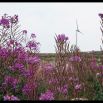“The challenge with sustainable innovation is the initial cost of development. Whoever is first to develop new technology has major hurdles to overcome, which are not necessarily guaranteed to pay off. There is few who are willing to take those risks. The investments have to be made by those who can afford it. Industry can take that risk, while other more fragile institutions cannot.“
Namibia-born Liezl van Wyk speaks of experience. Her recently installed wind farm at the Diavik Diamond mine in Canada, a 60 / 40 partnership between Rio Tinto and Harry Winston, is ground breaking and establishes world records of sustainable power innovation:
— the first large scale wind farm in the Northern Arctic circle,
— the only ‘remote and off-grid installation’ of this size wind farm: the wind/diesel hybrid system is not connected to the grid for back up unlike smaller existing turbines in other sub-arctic areas.
— the only wind turbines in the world guaranteed to function at -40ºC.
“I was based in South Africa when I was recruited as principal energy advisor for Diavik in 2010. Looking at the mine, what was startling was both cost and risk factor attached to the huge amounts of diesel required to run the mine. Diavik is based on an island, 300 km northeast from the nearest city, Yellowknife.“
Running the mine is entirely dependent on diesel: the mine needs as much power as the whole medium size city - like Yellowknife, altogether, about 18-28 megawatts on a continual basis. Additional factors are that Diavik mines below a lake - meaning constant water infiltration. Power is not only needed to extract, wash, process the diamonds, but also to constantly pump water from the underground tunnels which run hundreds of meters deep. If there was to be an electricity outage / power cut, the mine would not only stand the risk of flooding, but at winter temperatures that can drop below -50ºC, the reliability of instruments are greatly at risk, hindering a re-activation. As result, constant and secure power supply is the absolute life-line of the mine.
To provide this energy, as well as powering its mining fleet, the mine has been using up to 80 mio litres of diesel every year – half of which is used straight for power generation. Diesel is costly in these remote parts of the world, from purchase price to transport and storage logistics. The fuel can only be transported to the mine in a three week window of the coldest parts of winter when the lake is so deeply frozen that it can support the winter ice road across it and hundreds of diesel trucks carrying diesel to the mine site. To be factored in is the fact that two further mines are in the vicinity, all together needing approximately 150 mio liters of diesel to be transported on said same road within the same time frame. The carbon footprint as well as the risks involved are enormous.
“There is the risk of accidents, trucks overturning and diesel spilling into the water - as well as the potential necessity to fly in diesel in an emergency situation – a huge cost factor. Plus storing such a quantity of flammable, explosive fuel is another point to consider…”
Furthermore, the dangers are on the increase. “The effects of global warming are very visible up here in the cold north. Where in the past one could rely on a 3-4 week window of deep freeze that would guarantee a good winter road, we have seen warmer weather that can reduce ice thickness and grant us only a two week window or, who knows what in the coming years.”
“I started analysing options to reduce the diesel dependence, risk and the CO2 footprint. These included hydropower, geothermal and windpower, with solar power not being an option in a region where it’s mostly dark for many months of the year. Transmission supply connected to the hydropower source proved too costly in its set up for a mine with only ten years of operation left, leaving wind energy to turn to.”
- “I started the whole project from a blank sheet of paper on my couch in South Africa. My background being high voltage engineering and energy transmission, the project was a good fit although I had never installed wind turbines before, and the extreme northern conditions made for complex challenges. I was working parallel to the weather studies at the mine: a weather tower had been installed at Diavik in 2008 and two years of study were statistically not adequate enough, but by the end of 2013 we had enough data to back up the calculations.”
“The first to consider was the design of the turbine:
— most wind turbines are designed with a gearbox, which is located at the central junction where the blades meet the top of the hub. In our case that would be 64 meters high, in arctic conditions. It was out of the question to have to maintain the turbine at this height, a problem surely arising in worst weather conditions. This eliminated all competitors and left us with Enercon, a German turbine producer, who makes turbines with an entirely different design from all the others: one without gearbox altogether.
— Enercon treated this project with great initiative and managed to meet all our demands including the operational guarantee at -40ºC, when the furthest industry had gone so far was -30ºC.
— Including the length of the 35 m long blades, the wind towers reach a majestic height of 100 meters. This makes by far for the highest piece of construction on the island and beyond. In the occasion of a storm, lightning will with no doubt strike one of the turbine blades. Grounding them therefore is crucial. The granite rock of the island which is locked in permafrost however is not conductive and does not provide an adequate ‘earth’ for grounding.“
- “The solution I found was installing copper conductors through the rock into the adjacent lake, calculating the correct spot at a low entry level at a place for the current to take away the electric energy and dissipate into the lake. For back-up, we also drilled copper rods up to 30m into the granite to provide a ‘local’ earthing point.“
“It was my ambition to have only minimal components of the project outsourced. The intent was to make this a ‘built by Diavik’ project, with most of the planning, construction, project management and operating done in-house and at lower cost.
This would also offer the opportunity for our own employees and people in the region to learn from this project and build local skills capacity. This approach has been very successful and made our own people rise to the occasion and deliver on this exciting project. Although some of the more complex maintenance tasks will be outsourced to the OEM (Original Equipment Manufacturer), we will continue to train local people to maintain and operate these units and take an increasing role in the life cycle management of them.“
“This ultimately is a great long time benefit for the community: the whole area being off-grid, the only energy accessible to communities in the region is once again, very expensive diesel. In addition, once all the necessary the data was collected in 2010 - and evaluated by Diavik and Genivar, a third party consultant used to validate the wind resource model, Diavik no longer needed the weather tower on site. I therefore found a perfect organization to donate it to: a joint venture between an electrical service company in Yellowknife and a ‘first nation’ business consortium. This way, the local community can benefit from the learnings and infrastructure established.“
“The mine has an expected operating life span of another 10 to 11 years, with an additional closure period of another six years. The wind turbines usually have a life span of 20 years. Given the harsh natural conditions however we expect the actual lifespan to be somewhat shorter.
The agreement we have with the local government and communities on whose land Diavik operates, is to dismantle the turbines and leave clean remediated territory behind. If the turbines are in a condition that they can serve for some more years, they will be transported off site and donated to a community where they can be of continued value. During the closure and rehabilitation phase, the dikes that separate the mine from the lake, will be bridged and the open pits flooded, which will form part of the fish habitat project the mine is running.“
The plant was finally commissioned end September and energised beginning October 2012. The first winter has been particularly harsh with below seasonal averages. Conditions of low -40’s ºC down to -53 ºC with wind-chill served as a thorough test of the cold climate package. Some changes included upgrading of the heater fans for improved de-icing of the rotor blades, and colder climate low viscosity lubricants used in the bearings and drives that tend to crystallise at these low temperatures.The energy output so far is slightly above target and the budget allocation of diesel for 2013 is aiming at reducing several million liters of diesel. All going according to plan, the $30 mio wind farm would have saved up to 60 mio litres of diesel by the time of mine closure. And no-one knows, at what price diesel will be by then.
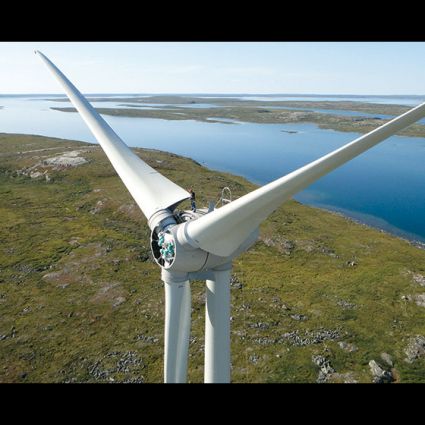 The Diavik Diamond Mine, located on a 20 square kilometre island, in Lac de Gras. The Arctic Circle lies 220 kilometres north of the mine - Photo: Diavik
">The Diavik Diamond Mine on East Island in Lac de Gras. The Arctic Circle lies 220 kilometres north of the mine - Photo: Diavik
">The Diavik Diamond Mine in summer - Photo: Diavik
">The turbine transport via sea, from the German plant via Thunderbay harbour in Ontario Canada - Photo: Diavik
">The turbine transport via sea, land and ice - from the German plant to the mine site took over a month - photo: Diavik
">The turbine transport via sea, land and ice, lots of ice - Photo: Diavik
">The turbine transport via sea, land and ice, and more ice - Photo: Diavik
">The turbines arrive at the mine at last - Photo: Diavik
">Liezl van Wyk welcomes the arrival of the turbine parts with the Northern lights joining the celebration - Photo: Diavik
">The turbines are Liezl - size - Photo: Diavik
">Liezl oversees the turbine installation - Photo: Diavik
">The turbine in its glory - Photo: Diavik
">A turbine overlooking the stark tundra landscape features dwarf birch, northern Labrador tea, blueberry, mountain cranberry, and bearberry, with willow, sphagnum moss, and sedge tussocks dominating wet lowlands - Photo: Diavik
">
The Diavik Diamond Mine, located on a 20 square kilometre island, in Lac de Gras. The Arctic Circle lies 220 kilometres north of the mine - Photo: Diavik
">The Diavik Diamond Mine on East Island in Lac de Gras. The Arctic Circle lies 220 kilometres north of the mine - Photo: Diavik
">The Diavik Diamond Mine in summer - Photo: Diavik
">The turbine transport via sea, from the German plant via Thunderbay harbour in Ontario Canada - Photo: Diavik
">The turbine transport via sea, land and ice - from the German plant to the mine site took over a month - photo: Diavik
">The turbine transport via sea, land and ice, lots of ice - Photo: Diavik
">The turbine transport via sea, land and ice, and more ice - Photo: Diavik
">The turbines arrive at the mine at last - Photo: Diavik
">Liezl van Wyk welcomes the arrival of the turbine parts with the Northern lights joining the celebration - Photo: Diavik
">The turbines are Liezl - size - Photo: Diavik
">Liezl oversees the turbine installation - Photo: Diavik
">The turbine in its glory - Photo: Diavik
">A turbine overlooking the stark tundra landscape features dwarf birch, northern Labrador tea, blueberry, mountain cranberry, and bearberry, with willow, sphagnum moss, and sedge tussocks dominating wet lowlands - Photo: Diavik
">Turbine installation at the Diavik Diamond mine. With the span of the blades the turbine reach an impressive height of 100 mts - Photo: Diavik ">
 The Diavik Diamond Mine, located on a 20 square kilometre island, in Lac de Gras. The Arctic Circle lies 220 kilometres north of the mine - Photo: Diavik
">
The Diavik Diamond Mine, located on a 20 square kilometre island, in Lac de Gras. The Arctic Circle lies 220 kilometres north of the mine - Photo: Diavik
">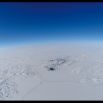 The Diavik Diamond Mine on East Island in Lac de Gras. The Arctic Circle lies 220 kilometres north of the mine - Photo: Diavik
">
The Diavik Diamond Mine on East Island in Lac de Gras. The Arctic Circle lies 220 kilometres north of the mine - Photo: Diavik
">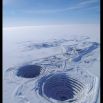 The Diavik Diamond Mine in summer - Photo: Diavik
">
The Diavik Diamond Mine in summer - Photo: Diavik
">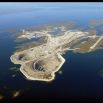
The turbine transport via sea, from the German plant via Thunderbay harbour in Ontario Canada - Photo: Diavik ">
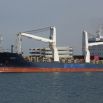 The turbine transport via sea, land and ice - from the German plant to the mine site took over a month - photo: Diavik
">
The turbine transport via sea, land and ice - from the German plant to the mine site took over a month - photo: Diavik
">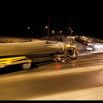 The turbine transport via sea, land and ice, lots of ice - Photo: Diavik
">
The turbine transport via sea, land and ice, lots of ice - Photo: Diavik
">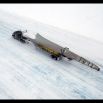 The turbine transport via sea, land and ice, and more ice - Photo: Diavik
">
The turbine transport via sea, land and ice, and more ice - Photo: Diavik
">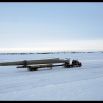
The turbines arrive at the mine at last - Photo: Diavik ">
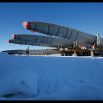 Liezl van Wyk welcomes the arrival of the turbine parts with the Northern lights joining the celebration - Photo: Diavik
">
Liezl van Wyk welcomes the arrival of the turbine parts with the Northern lights joining the celebration - Photo: Diavik
">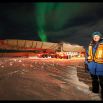 The turbines are Liezl - size - Photo: Diavik
">
The turbines are Liezl - size - Photo: Diavik
">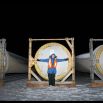 Liezl oversees the turbine installation - Photo: Diavik
">
Liezl oversees the turbine installation - Photo: Diavik
">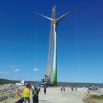
The turbine in its glory - Photo: Diavik ">
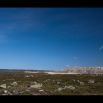 A turbine overlooking the stark tundra landscape features dwarf birch, northern Labrador tea, blueberry, mountain cranberry, and bearberry, with willow, sphagnum moss, and sedge tussocks dominating wet lowlands - Photo: Diavik
">
A turbine overlooking the stark tundra landscape features dwarf birch, northern Labrador tea, blueberry, mountain cranberry, and bearberry, with willow, sphagnum moss, and sedge tussocks dominating wet lowlands - Photo: Diavik
">